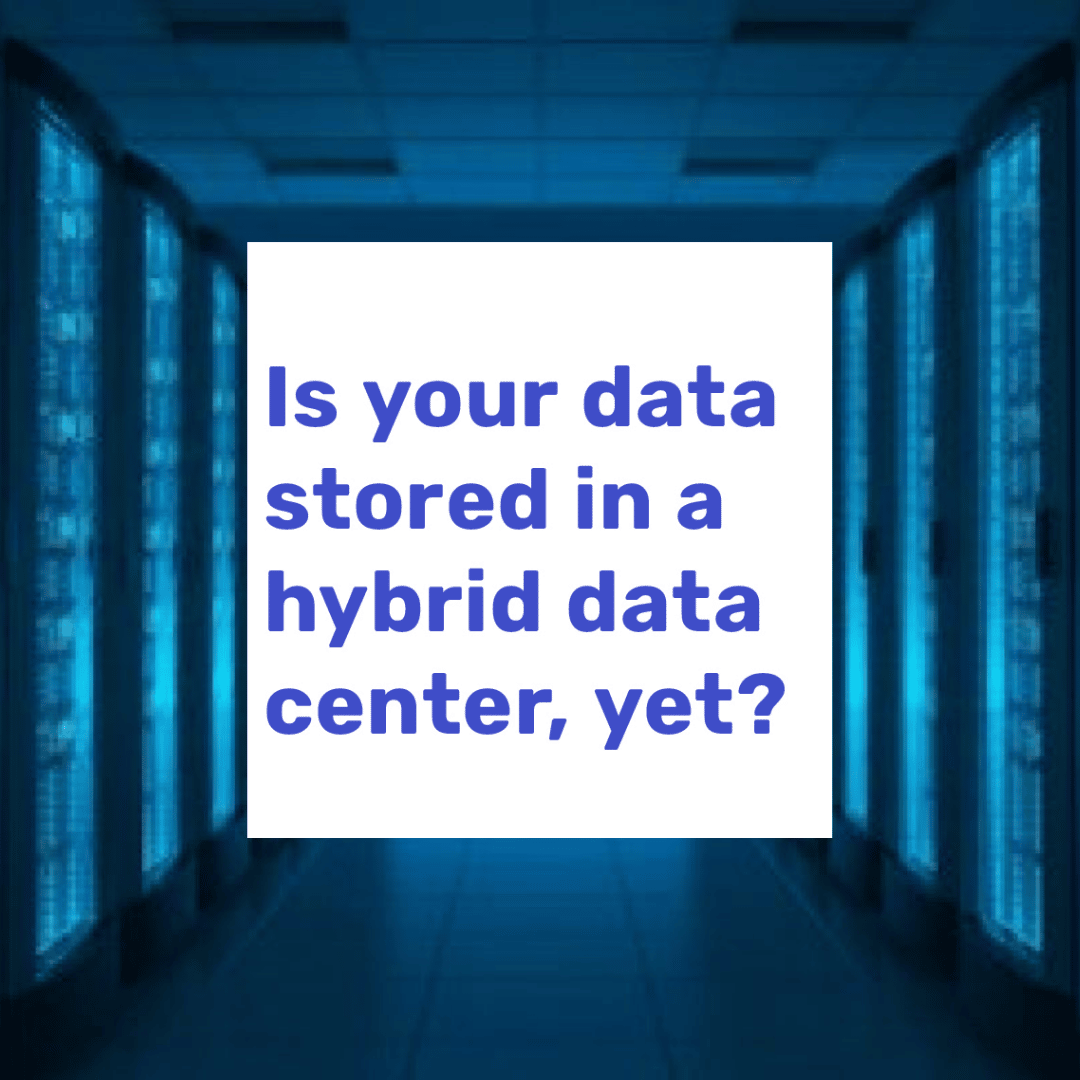If you work in the data center industry today, it’s easy to see the cloud as a threat. There are a slew of stories out there predicting that cloud computing will dampen the importance of data centers, if not kill them completely.
Those stories get one crucial detail wrong. What’s happening is not a wholesale shift to the cloud, but rather the evolution of IT strategies into what has become known as a hybrid IT model.
Hybrid IT isn’t going to kill data centers. On the contrary, it presents a vital opportunity for data centers to become more important than ever by serving as a path of enablement for complex workloads that can’t run in the cloud alone. As long as conventional data centers evolve into hybrid data centers, they have a bright future ahead.
Here’s how hybrid IT is changing data centers and making them more important than ever for businesses of all types and sizes.
What is hybrid IT?
Hybrid IT is an IT strategy that combines cloud-based resources with those hosted in private data centers or colocation facilities.
Probably the most common example of hybrid IT is hybrid cloud architectures. In a hybrid cloud, public cloud services integrate with services, applications or data hosted on private servers, often using a framework like Google Anthos, AWS Outposts or Azure Arc.
However, hybrid IT use cases aren’t limited strictly to combining off-the-shelf public cloud services with private infrastructure or data centers. A company that runs production applications in the cloud but stores backup data in a colocation facility in order to isolate the data from production uses a hybrid IT approach. A business that leverages SaaS applications for some of its needs, while hosting other apps on its own servers inside a data center, also does hybrid IT. And so on.
We’re living in a hybrid world
You hear a lot these days about the shift to the cloud, which is now used by something like 90 percent of businesses.
You may hear less about hybrid IT, which tends to receive less coverage than the cloud in general. Nonetheless, sources like G2 predict that 90 percent of enterprises will use a hybrid cloud model by 2022.
Although hybrid cloud is only one example of hybrid IT, these numbers drive home the point that we are not just living in a cloud-centric world. We’re also living in a hybrid world, meaning one in which cloud environments coexist with applications and data that live outside the public cloud.
What that means for businesses is that the ability to integrate applications, data and services hosted in public clouds with workloads running in private data centers or colocation facilities has become paramount. The public cloud alone doesn’t suffice for most businesses — if it did, they would not be pivoting toward hybrid architectures at such high rates — and so data centers are not going away anytime soon.
Hybrid IT and data centers
To meet the requirements of hybrid workloads, however, data centers need to up their game.
Gone are the days when data centers could meet the typical business’s needs by offering just a place for customers to set up racks of servers, power them up and connect them to the Internet. Today’s data centers need to do more. They need to become hybrid data centers.
A hybrid data center does more than provide server real estate. It also delivers solutions such as:
- Consultation services to help customers plan the optimal hybrid architecture for their needs, deciding which workloads to place in the cloud and which in a colocated data center.
- Deployment services that give customers the same simple deployment experience for data center infrastructure that they enjoy when provisioning environments in the cloud.
- Management services so that monitoring and maintaining colocated resources is just as easy as it is in the cloud.
- A variety of connectivity options that allow customers to build the optimal network architecture to connect colocated workloads with public cloud resources.
Data center providers that deliver solutions like these will play a critical role in enabling businesses to make full use of public cloud services when feasible, while still enjoying the performance, security and cost benefits of colocation facilities for workloads that require them.
Conclusion: Long live the hybrid data center
Rather than curtailing the growth of the data center industry, the cloud has simply spawned a new hybrid age. Many businesses will continue to need private data centers where they can host workloads that aren’t an ideal fit for the public cloud, while still integrating those workloads with public cloud services that they do use.
For data centers that can deliver an optimal hybrid experience — which means the ability to deploy and manage workloads in a colocation facility as seamlessly as businesses can in the public cloud — the future is bright.



